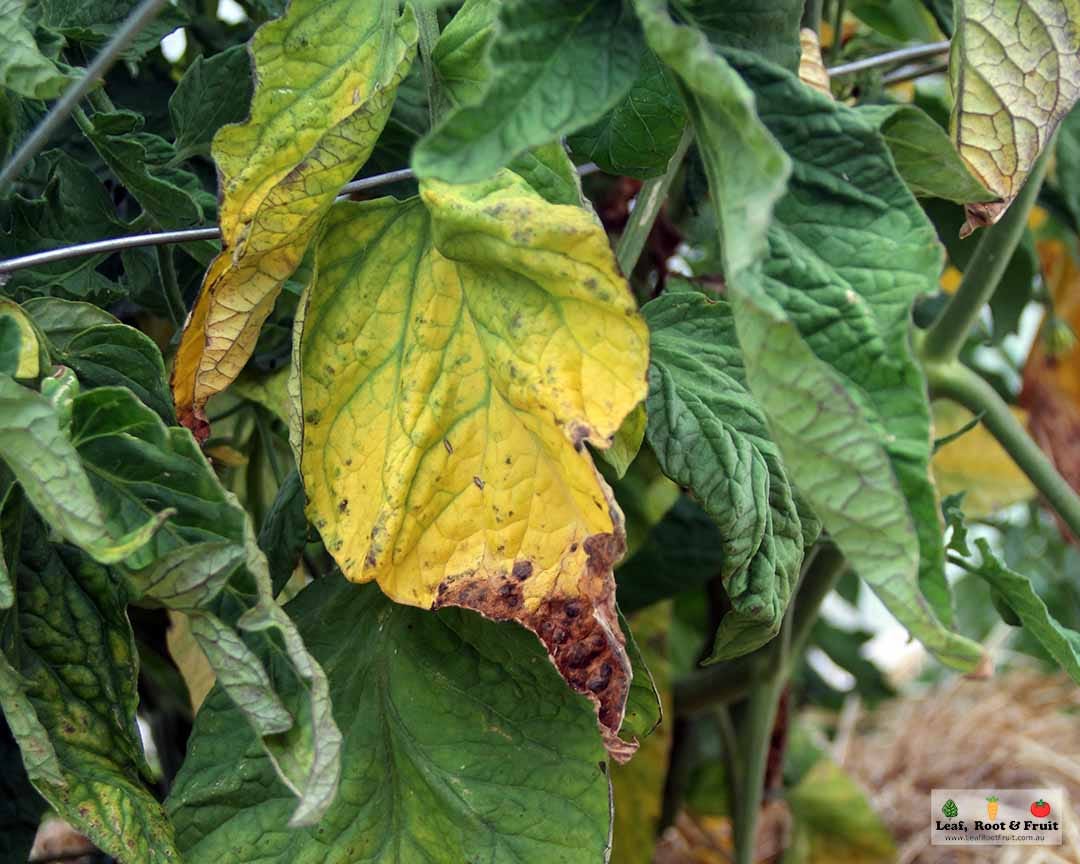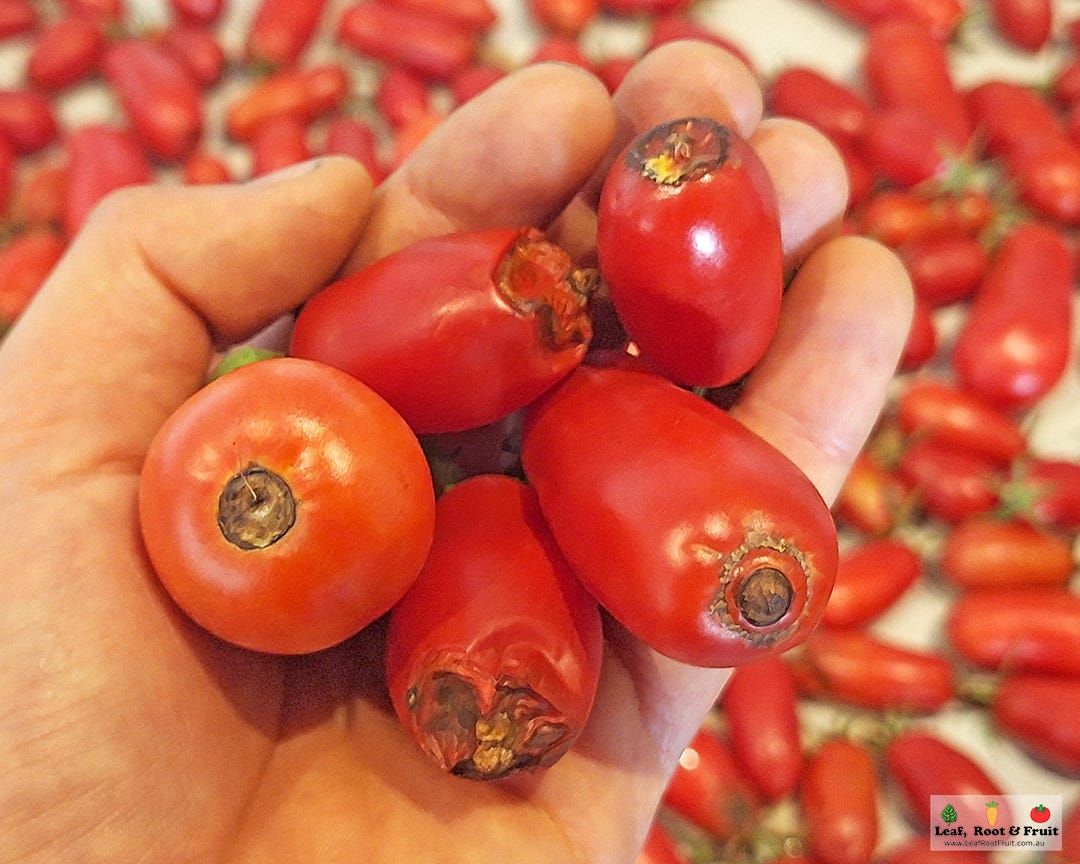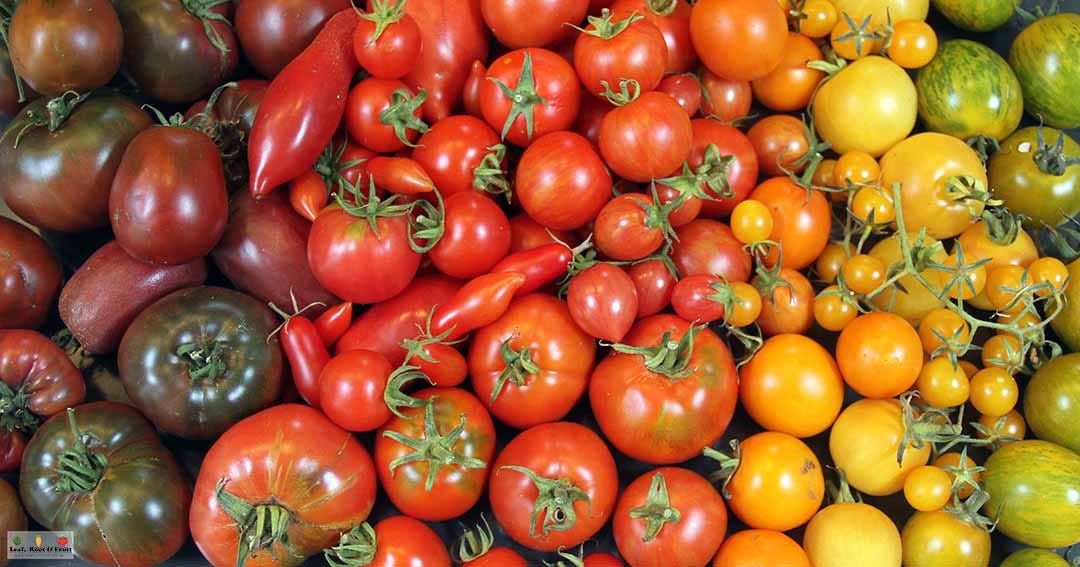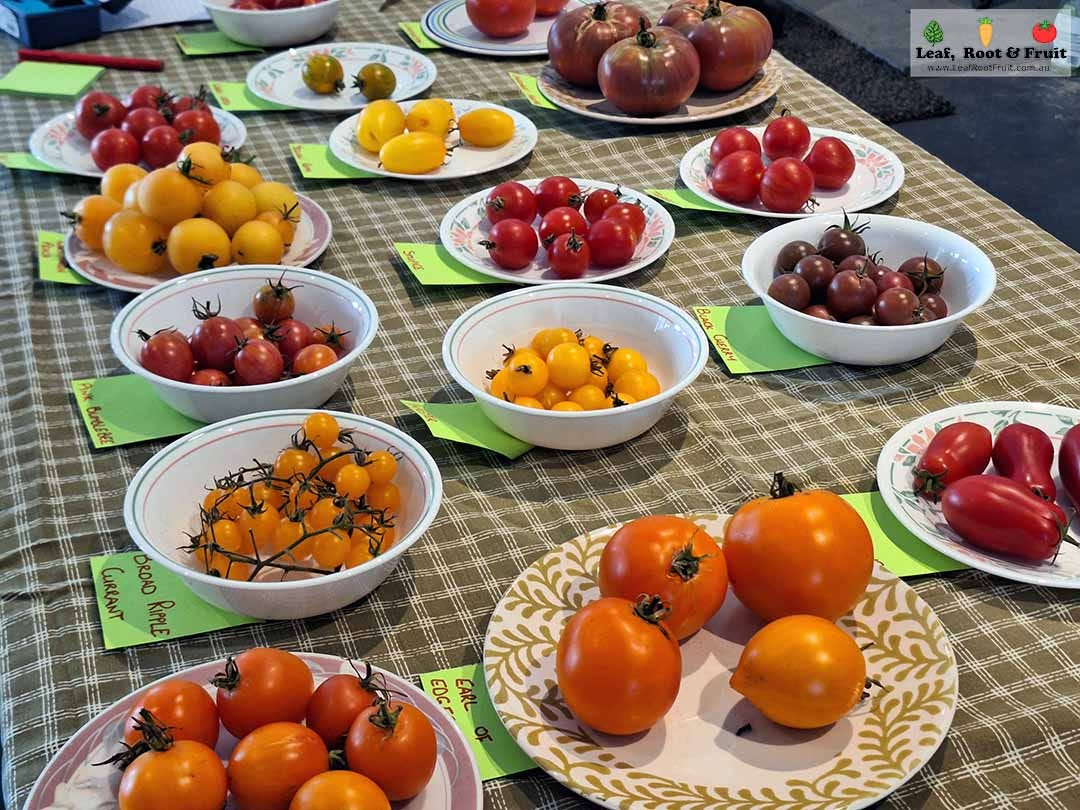I connect with thousands of gardeners. I love chatting all things gardening and the one gardening topic that seems to rule them all is tomatoes.
I discuss citrus and using microclimates – and you want to know about starting tomatoes in a greenhouse.
I announce that I’ve discovered Queensland Fruit Fly in my plums – and you report they have infested all your tomatoes.
I complain about the recent hot dry summer and having to hand water all the time – and you reply that at least it’s a good season for tomatoes.
I talk about planting bare root fruit trees – and you ask about deep planting tomatoes.
It’s always tomatoes, tomatoes, tomatoes!
To a home gardener, tomatoes are a most precious crop. If they grow and ripen, if there’s an abundance of them sitting on the kitchen bench, well then, everything is in order in the world. We can sleep soundly knowing that tomorrow is another day. Another day full of tomatoey goodness.
But when things take a turn for the worse. When early blight spreads or blossom end rot eventuates. When herbicide contamination sends the growing tips all twisty and spindly. When the dreaded rats descend and devour every ripening fruit. When the Queensland Fruit Fly infests the biggest and the best. My goodness, hell hath no fury like a tomato grower scorned. Rage and despair, anguish and depression, tears and tantrums. I’ve seen tomatoes cause it all.
What is it about the humble tomato? Why is it such an emotional crop? Why do we ride the tomato roller coaster?
I reckon a lot of it has to do with memories and family connection. Fond memories of being a child, in the garden with parents or grandparents plucking ripe tomatoes and eating them then and there in the garden together. Perhaps they evoke memories of passata sessions with your extended family and a connection to cousins, aunts, uncles and grandparents. Or maybe the tasty juice running down your chin reminds you of summer holidays spent at a distant relative’s farm, sampling their food garden abundance. For me, it’s a competition with my Grandmother Peggy to see who could ripen the first tomato of the year. Many a Christmas Day Peggy would hand me a small gift bag or box from under the tree and I’d open it to find her first ripe tomato of the year. I never once beat her.
If she were still alive today, I reckon I’d be able to beat her. I’ve got the knack now. But she’s not. So every time I bite into that first ripe tomato of the summer I’ll savour her influence on my life.
Why do you grow tomatoes? What memories does it evoke? I’d love to hear your story and the connection that growing your own tomatoes brings you.
Timing and genetics will make or break your tomato crop
These are the two most critical aspects of tomato growing success:
Timing
Seed selection.
Tomatoes won’t usually grow in the depths of a temperate climate winter (although yes, I’ve seen exceptions to this rule). In a temperate climate, tomatoes must be grown over the summer growing season when it is warmer. Spring and autumn are the bookends to the tomato season. Tomato plants won’t tolerate frost without the protection of a greenhouse or cloche. But it’s not just frost you need to worry about. Cold soil causes tomatoes to stagnate, leaving them prone to pests and diseases.
Plant your tomatoes too early and they might stall, stutter or even die. Plant too late and they won’t have time to ripen before the cool humid nights of winter introduce disease. All you’ll manage are a gazillion jars of green tomato chutney. Timing is critical when it comes to tomatoes. I’ve already discussed the timing of planting in relation to my quest to grow a Christmas tomato without a greenhouse (yes, it can be done). What’s a Christmas tomato, you ask? How do you grow one? Find out here.
Then there’s the seed selection. I’ve written in general about seed selection and why it is so important here. But my poster child for this topic is the humble tomato. You can have the best compost in the world, the fanciest staking methods, you can lavish water on your plants, talk to them, spend every night out there chasing away the rats, but if you start with inferior tomato seeds, you’ll only ever grow inferior tomatoes. Choose tomato varieties that you like to eat. Find the tastiest varieties and grow those.
Can you keep a secret? I organise a tomato taste test for participants at certain workshops that I run. Every time, I add a supermarket tomato or two into the mix and give them a fancy name like ‘Worthington’. No matter whether I buy the expensive organic tomatoes, or the cheapest cherry tomatoes or slicers, my workshop participants rank the supermarket tomatoes the lowest of the lot. Every time. They are so bland.
Don’t save seeds from those tasteless watery supermarket tomatoes, because all you’ll ever grow are supermarket tomatoes.
I’ve listed some of my favourite tomato varieties below and I encourage you to share yours in the comments.
Common problems when growing tomatoes
Growing tomatoes is straightforward if you get the genetics and timing right. Plant the right tomato variety at the right time and she’ll be right. But get it wrong and there’s a whole list of diseases and ailments that can afflict your tomatoes.
Early blight is a fungal disease that can cause brown or black spots on the leaves and is more common during periods of high humidity. Good airflow can help prevent it. I find that Jaune Flamme, Brandywine Pink and many large red slicing tomatoes are prone to this disease. I can grow susceptible plants here in Kyneton, because our summers are hot and dry, so the disease doesn’t manifest. But when I grew Jaune Flamme in Melbourne the plants would be dead by the end of February thanks to the higher humidity and subsequent disease.

Wilt invades the roots via the soil. Again, choosing resistant varieties prevents this issue. It also eliminates the need to rotate your crops every year to avoid it.
Blossom end rot is caused by a lack of calcium – but that’s not necessarily because the calcium is lacking in your soil. I’ve written about blossom end rot here. The best way to avoid it is to keep soil moisture consistent and grow resistant varieties. Blossom end rot is most prevalent in Roma tomatoes. Don’t take any notice of the people on social media who tell you to add Epsom salts. This will only make it worse.

All tomato varieties are extremely susceptible to herbicide contamination, which can arrive in purchased soil, compost or straw mulch. Unfortunately, I’m seeing it more and more. You’ll notice it as twisted and distorted foliage at the growing tips. More on this problem and how to test for it here.
What about that new tomato disease that was in the news recently? Tomato brown rugose fruit virus (ToBRFV) affects tomatoes, capsicums and chillies. You’re unlikely to discover it in your garden for now, but if you’re concerned you can read more about it here.
All bark and no bite? Are your plants looking immaculate and lush in February and not setting fruit? Then you’ve probably overfed them. More on that here.
The Vegetable Patch from Scratch series will give you more information on:
Myth-busting double feature: pollination panic and determinate deluge
I often see social media posts of folks taking to their tomato flowers with an electric toothbrush. And sure, those slow-motion videos of the pollen flying everywhere do look amazing. But don’t believe the hype. There’s no need for any of that malarky.
I grow tomatoes under insect netting. It provides a great microclimate and helps to extend the season. It prevents the birds from eating the fruit and it stops the dreaded Queensland Fruit Fly from stinging them. However, my set-up also prevents bees and other pollinators from accessing the tomato flowers. And guess what? I still pick crates and crates of tomatoes every year. Tomato flowers seem to pollinate themselves just fine, which is probably why they come out true to type when you save their seed.
There’s no need for electric toothbrushes or pollination panic. The tomato plants have got it sorted.
The other myth I want to address is the determinate vs indeterminate tomato debate. Most salad, slicing and cherry tomatoes are indeterminate. They grow on ever increasing long vines and their fruit ripens over a lengthy harvest season. By contrast, determinate tomatoes, which include most of the cooking tomatoes, like Romas, are typically bush tomatoes. These need a bit of support, but not the elaborate staking that indeterminate tomatoes tend to enjoy. The other characteristic of determinate tomatoes is that they ripen all their crop at once. Or so the internet might lead you to believe.
I’m not so sure about that. My San Marzano saucing tomatoes ripen fruit over a long-drawn-out season. I normally pick the first ripe fruit in early February, and from there they increase their yields of ripe fruit in a big way until I eventually get sick of picking them. I rip the plants out to make way for green manure crops around late April or even May. I reckon it’s a myth that determinate tomatoes ripen all their fruit in a short few weeks.
The nitty gritty of growing tomatoes: phenology, varieties and planting
Timing
This chart shows the best times to grow tomatoes based on my experience of growing these crops in both Melbourne (warm temperate) and Kyneton (cool temperate), both in south-eastern Australia. The timing is applicable for growers in the same climates across the southern hemisphere. Northern hemisphere folks will need to adjust the timing by six months.



